Key takeaways
- Behringer mixers provide an affordable and user-friendly solution for radio broadcasting, making them ideal for beginners.
- The mixers offer intuitive design, multiple input channels, and robust construction, ensuring reliable performance during live shows.
- Key tips for effective use include familiarizing with gain controls, careful EQ adjustments, and clearly labeling cables for efficient operation.
- While suitable for many needs, those seeking advanced sound shaping might consider higher-end options in the future.
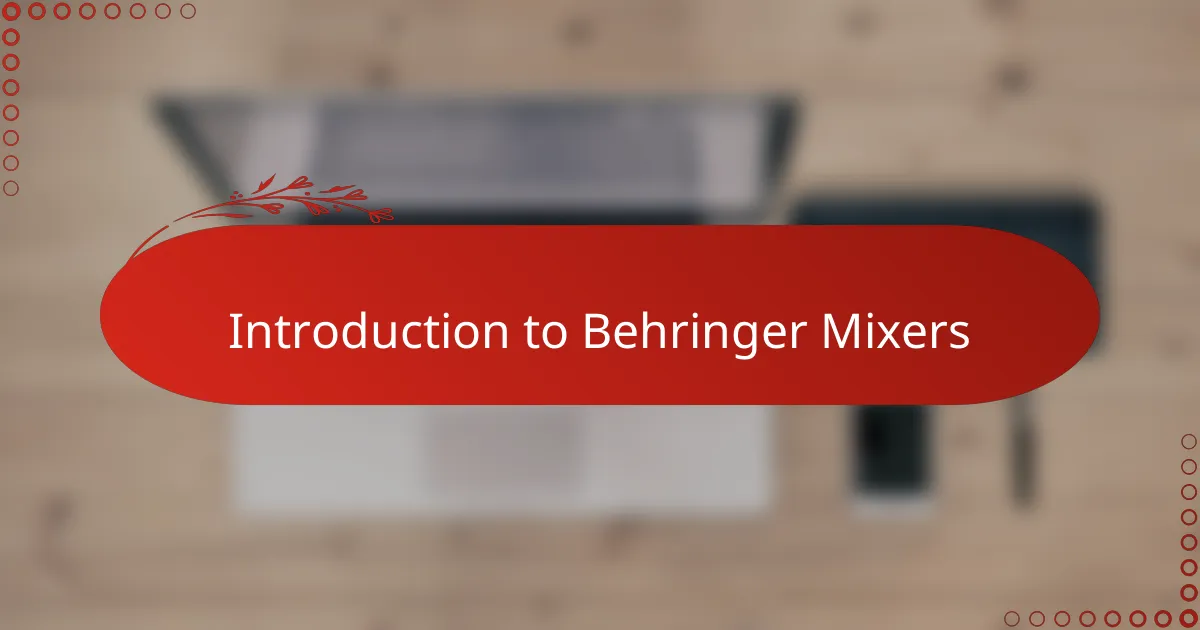
Introduction to Behringer Mixers
Behringer mixers have always stood out to me as a blend of affordability and functionality, especially for those stepping into the world of radio broadcasting. Have you ever felt daunted by the price tags of professional audio gear? I certainly did, until I discovered how Behringer offers a surprisingly robust range without breaking the bank.
From my experience, these mixers strike a balance between simplicity and versatility. They might not have every high-end feature, but they cover the essentials that matter most when managing live audio. In a fast-paced broadcast environment, that kind of reliability can make a world of difference.
What really impressed me was how accessible they make complex mixing tasks. Even as someone who wasn’t initially tech-savvy, I found their interface intuitive enough to get the job done confidently. That’s something I think anyone starting out in radio should appreciate—a tool that invites you to learn without overwhelming you.
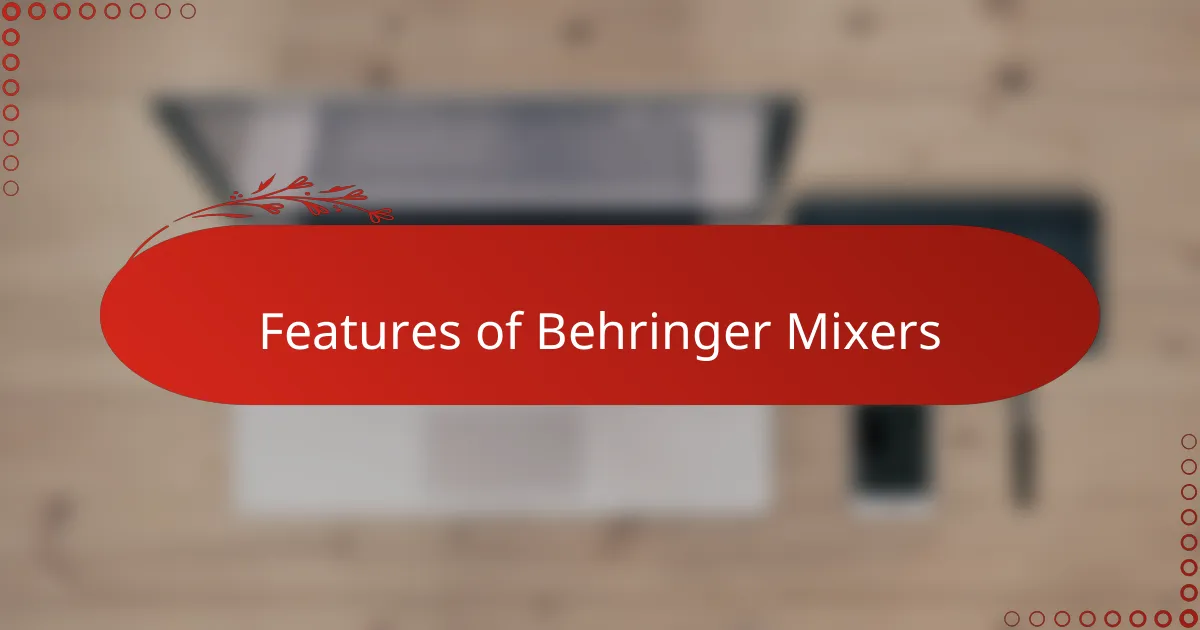
Features of Behringer Mixers
One of the features I appreciate most in Behringer mixers is their intuitive design. Have you ever struggled to find the right knob or button mid-broadcast? With Behringer, the layout feels natural, so I rarely have to pause and think, which keeps the energy flowing smoothly.
Another aspect that caught my attention is the inclusion of multiple input channels and built-in effects at an affordable price point. In my early days, being able to connect several microphones and instruments without reaching for extra gear was a game-changer. It gave me the flexibility to experiment without worrying about complicated setups.
Lastly, I often find the durable construction reassuring, especially when equipment gets moved around or used frequently during live shows. Knowing that my mixer can handle the occasional bump or spill without compromising performance adds a layer of confidence I didn’t expect from such budget-friendly gear.
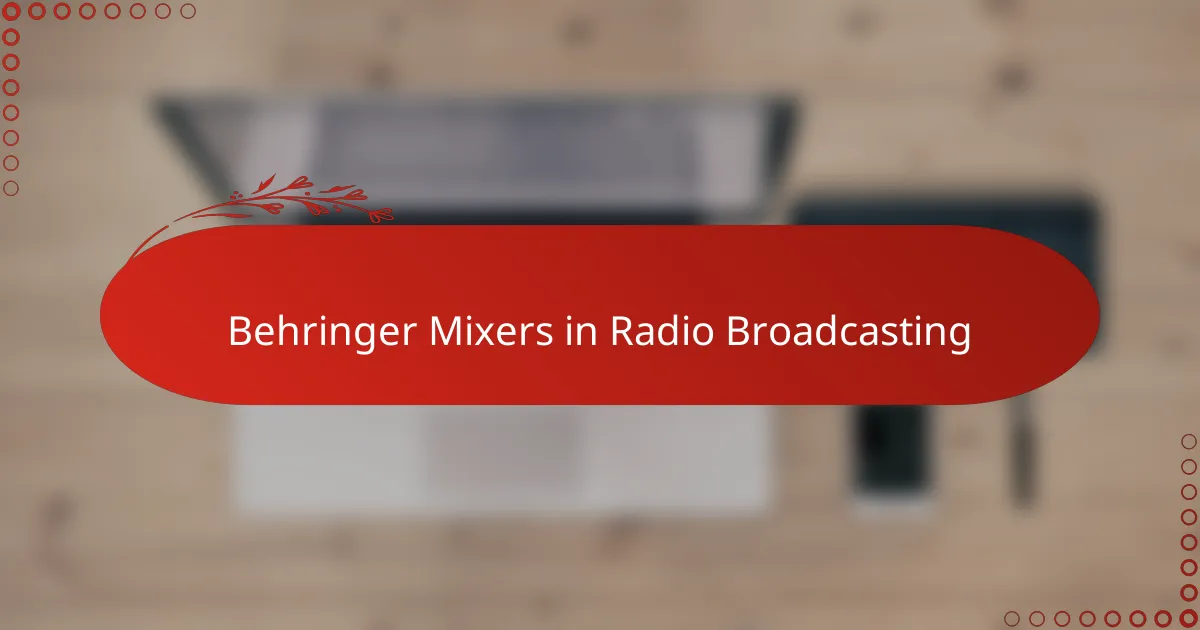
Behringer Mixers in Radio Broadcasting
When I first brought a Behringer mixer into my radio broadcasting setup, I was genuinely surprised by how well it handled live audio dynamics. Have you ever experienced last-minute changes during a live show and wished your gear could keep up? With Behringer, the transition felt seamless, allowing me to focus more on content and less on technical hiccups.
What’s more, in a broadcasting environment where space and budget are often limited, I found these mixers to be a perfect fit. They don’t demand a vinyl record player-sized footprint, which helped me keep my studio organized without sacrificing control over the sound. That compactness made a real difference when setting up on the fly for remote broadcasts.
I also appreciate how the sound quality, while not ultra-premium, remains consistently clear enough for professional radio standards. It’s that reliable clarity that reassures me during those critical live moments when every word must reach listeners without distortion or dropouts. Isn’t that exactly what we want from a mixer in radio broadcasting?

Practical Benefits in Radio Use
What really stands out to me when using Behringer mixers in a radio setting is their straightforward functionality under pressure. Have you ever had equipment freeze you up during a live segment? With Behringer, the controls respond instantly, which helped me stay calm and focused when the show was on air.
I also value how these mixers simplify signal routing without confusing me with unnecessary features. Early on, I recall struggling to patch multiple audio sources, but Behringer’s clear labeling and logical flow made it easier to manage. That practical ease saved me time and avoided mistakes, especially when the clock was ticking.
Another practical benefit I can’t ignore is their consistent performance during long sessions. I’ve worked marathon broadcasts where stability is non-negotiable, and these mixers rarely let me down. Knowing I can rely on them day after day gives me peace of mind, which is priceless in the broadcasting world.
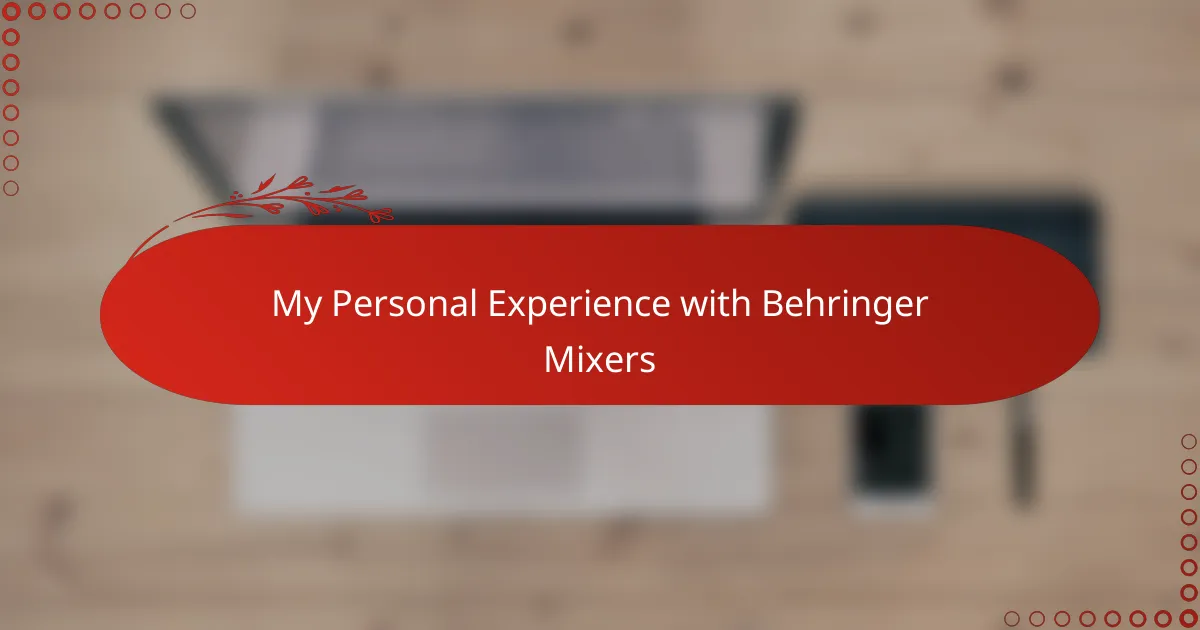
My Personal Experience with Behringer Mixers
I remember the first time I unboxed a Behringer mixer for my home radio setup—it was surprisingly lighter than I expected, and that instantly made me more comfortable handling it. Have you ever felt that awkward hesitation with bulky gear? For me, this made a big difference in confidence, especially during those early live recordings when every move counts.
One moment that stands out was during a last-minute remote broadcast when technical issues started piling up. While other equipment struggled, my Behringer mixer kept the audio clean and responsive. It felt like having a reliable teammate who never lets you down, even when the pressure mounts.
Of course, it’s not perfect—sometimes I wish for a bit more finesse in the sound shaping controls—but honestly, the balance between ease of use and dependable performance has made it a staple in my toolkit. Don’t you think sometimes practical reliability beats fancy bells and whistles? For me, it definitely does.
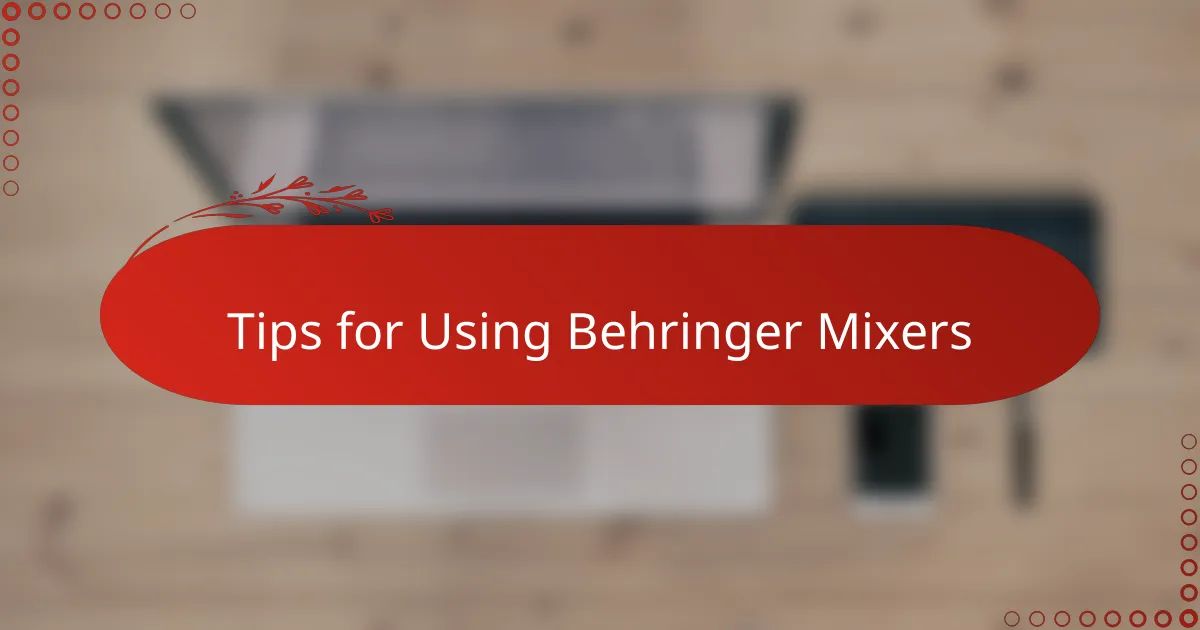
Tips for Using Behringer Mixers
One tip I always stress when using Behringer mixers is to take the time to familiarize yourself with the channel gain controls early on. Have you ever had that moment where the audio suddenly peaks and distorts mid-show? I’ve been there, and dialing in the gain properly from the start saved me from scrambling to fix unpleasant noises during live broadcasts. It’s a simple step that really keeps the sound clean and professional.
Another thing I’ve learned is to make the most of the built-in EQ settings but avoid over-tweaking them. I used to get carried away trying to sculpt the perfect tone and ended up introducing more issues than I solved. My advice? Start with a flat EQ, listen carefully, and adjust only what’s necessary for clarity. It keeps your workflow smooth and prevents last-minute surprises when time is tight.
Lastly, I recommend labeling your cables and inputs clearly. In busy broadcast sessions, I often found myself reaching for the wrong channel until I took a few minutes to mark everything properly. It sounds basic, but trust me, that little organization trick reduced my stress and kept the show running without hitches. Have you tried this? Once you do, you’ll wonder how you ever managed without it.

Conclusion and Recommendations
Reflecting on my experience, I’d definitely recommend Behringer mixers for broadcasters who need dependable, straightforward gear without a hefty price tag. Isn’t it reassuring to know you can count on your mixer during those unpredictable live moments? For me, that peace of mind is worth every penny.
That said, if you’re chasing ultra-refined sound shaping or advanced features, you might want to explore higher-end options. But honestly, in the hustle of radio broadcasting, practical reliability often outshines technical bells and whistles. Have you felt the same way when balancing cost against performance?
Ultimately, my advice is to start with a Behringer, get comfortable with its controls, and build confidence in your mixing skills. From there, you can decide if and when to upgrade. Don’t rush—sometimes mastering the basics with solid, user-friendly equipment makes all the difference in delivering smooth broadcasts.
